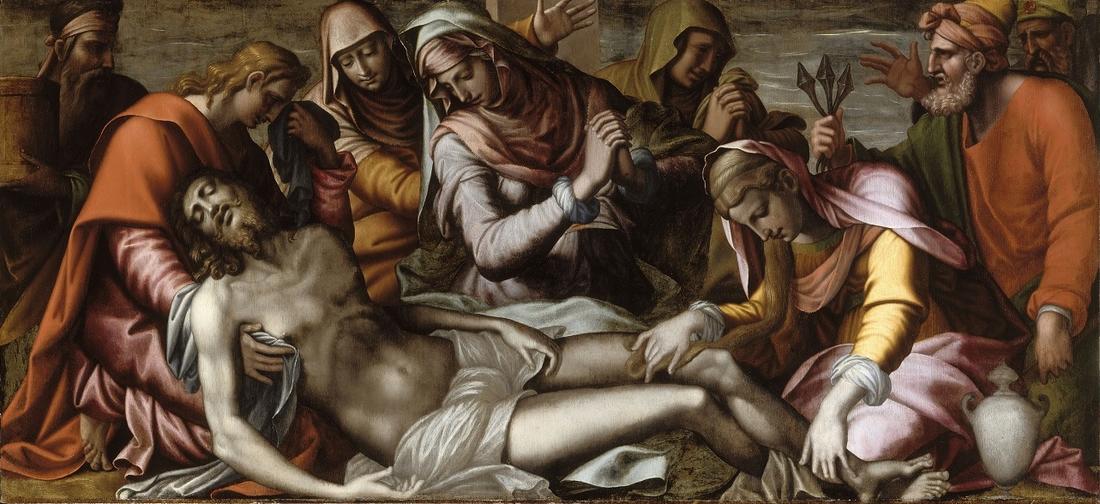The light strikes the white body of Christ, laid out in the foreground. He’s surrounded by his loved ones, who mourn his death. This is called the Lamentation. Saint John supports his head while his mother, the Virgin Mary, stands beside him, her hands clasped. Mary Magdalene is at his feet, her hands resting on his legs. The vase beside her allows us to identify her. It refers to an episode recounted in the Bible in which Mary Magdalene used the perfume contained in the vase to anoint Christ's feet.
In the background on the right, a man with a white beard holds the nails used in the Crucifixion. This is Joseph of Arimathea, who offered his tomb for Christ’s burial.
An unidentified man behind Mary sharply extends his arm in a gesture of grief. However, he remains in the shadows, as Penni prefers to emphasise the figures in the foreground through the use of bright light and bold colours.
This wooden panel was long displayed in a Paris church. But at the end of the 18th century, the revolutionary government seized the works of art displayed in religious buildings. The work was then transferred to Lille Museum, now the Palais des Beaux-Arts.
It may have been during this period that the painting was planed. Indeed, during restoration work, it was discovered that the lower part of the painting had been shortened, the reason unknown. That’s why the figures' heads touch the upper edge of the work !
Inv. P 770

The light strikes the white body of Christ, laid out in the foreground. He’s surrounded by his loved ones, who mourn his death. This is called the Lamentation. Saint John supports his head while his mother, the Virgin Mary, stands beside him, her hands clasped. Mary Magdalene is at his feet, her hands resting on his legs. The vase beside her allows us to identify her. It refers to an episode recounted in the Bible in which Mary Magdalene used the perfume contained in the vase to anoint Christ's feet.
In the background on the right, a man with a white beard holds the nails used in the Crucifixion. This is Joseph of Arimathea, who offered his tomb for Christ’s burial.
An unidentified man behind Mary sharply extends his arm in a gesture of grief. However, he remains in the shadows, as Penni prefers to emphasise the figures in the foreground through the use of bright light and bold colours.
This wooden panel was long displayed in a Paris church. But at the end of the 18th century, the revolutionary government seized the works of art displayed in religious buildings. The work was then transferred to Lille Museum, now the Palais des Beaux-Arts.
It may have been during this period that the painting was planed. Indeed, during restoration work, it was discovered that the lower part of the painting had been shortened, the reason unknown. That’s why the figures' heads touch the upper edge of the work !
Inv. P 770